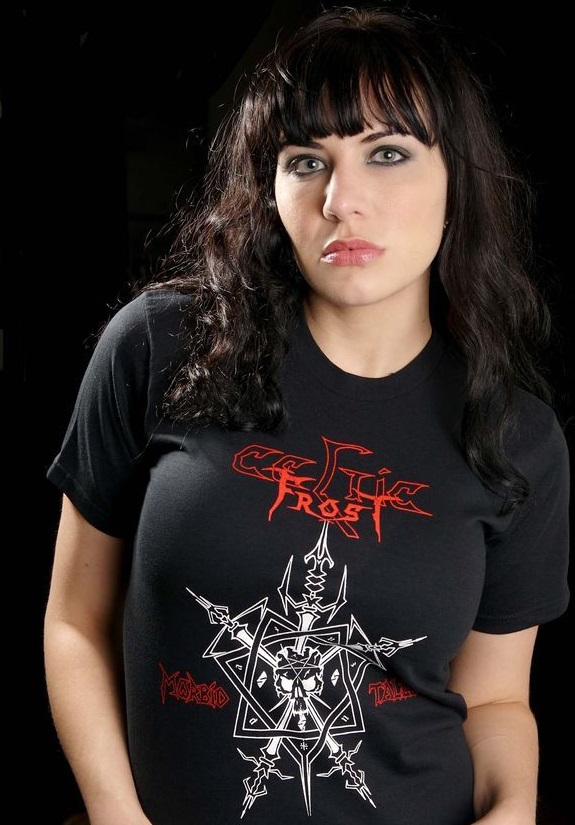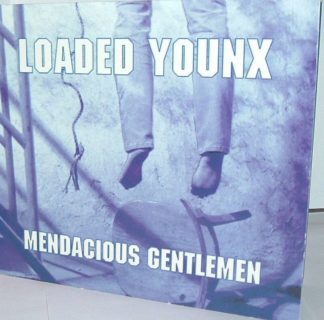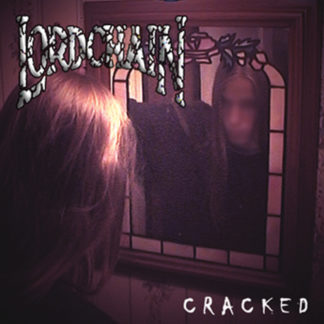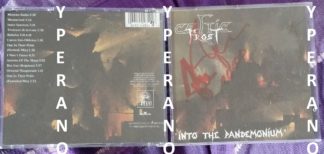Description
Into The Pandemonium (1987)
“Into The Pandemonium was the pinnacle of Celtic Frost’s creativity. By that time, through our rather manic work, we had attained finally barely a level of musicianship where we could actually realise all of these things. Martin and I brought into Celtic Frost incredibly diverse influences. He, for example, was deeply immersed in the new wave scene of the time -– Bauhaus, Joy Division and Siouxsie And The Banshees – and I came from new wave, but I also came from a jazz and classical background. I loved the ’70s prog bands like Emerson, Lake & Palmer, early Roxy Music and so on, and on Into The Pandemonium we finally felt comfortable enough as musicians to not just have little hints revealing this influences like we did on the previous albums but to actually go full out and write that kind of music. And of course we overstretched ourselves, we went right past our capabilities, but I’m very glad we did this. One can think of the album whatever one wants, and I know it’s a very controversial album for some, but creatively, it was certainly the pinnacle for Celtic Frost until 20 years later.” Tom G. Warrior



Check all songs from this playlist:
Celtic Frost Into The Pandemonium
Label: Noise
Catalog#: 0-3612-44842-2
Format: CD, Album
Country: Germany
Released: 1987
Genre: Avantgarde, Heavy Metal
1 Mexican Radio (Wall Of Voodoo Cover)
2 Mesmerized
3 Inner Sanctum
4 Tristesses De La Lune
5 Babylon Fell
6 Caress Into Oblivion
7 One In Their Pride (Porthole Mix)
8 I Won’t Dance
9 Sorrows Of The Moon
10 Rex Irae (Requiem)
11 Oriental Masquerade
12 One In Their Pride (Extended Mix)
Arranged By [Assistant Arranger] Hannes Folberth
Arranged By [Classical Arranger] Lothar Krist
Bass, Backing Vocals, Effects Martin Eric Ain
Cello [Guest Musician] Wulf Ebert
Drums, Timpani, Percussion, Backing Vocals, Synthesizer Reed St. Mark
Engineer Jan >>Mann French Horn [Guest Musician] Anton Schreiber
Lead Guitar [Guest Musician] Andreas Dobler
Lead Vocals, Backing Vocals, Lead Guitar, Rhythm Guitar, Synthesizer, Effects Thomas Gabriel Warrior*
Producer: Celtic Frost
Viola [Guest Musician] Jürgen Paulmann
Violin [Guest Musician] Eva Cieslinski, Malgorzata Blaiejewska Woller
Vocals [Guest Musician] Claudia-Maria Mokri*, Manü Moan
Recorded at Horus Sound Studio, Hannover Germany January/Fabruary/March/April 1987.
Reed St. Mark plays Sonor drums & Paiste cymbals exclusively.
Track 1 originally performed by Wall Of Voodoo.
P+© 1987.
Copyright by Celtic Frost/Modern Music/Noise International and Maldoror Musikverlag, 1987.








Οι Ελβετοί από την ημέρα της σύλληψης των CELTIC FROST είχαν δώσει όνομα στο τρίτο τους άλμπουμ, γνωρίζοντας ότι θα είναι και το πιο πειραματικό τους. Έχοντας προσδιορίσει το πλαίσιο από την 1η Ιουνίου του 1984, ήταν αναπόφευκτο αυτό το άλμπουμ να είναι και το οριακό τους. Για τη δημιουργία του θυσιάστηκαν, μιας και οι ηχογραφήσεις διεκόπησαν από τη Noise, που προσπαθούσε με κάθε τρόπο να τους εκτροχιάσει, βάζοντάς τους στον ίσιο δρόμο του thrash των EXODUS. Εκείνοι, όμως, θα γυρνούσαν μέσα στο καταχείμωνο στην πατρίδα τους για να κάνουν δουλειές του ποδαριού ίσα ίσα για να πληρώσουν τους λογαριασμούς που είχαν αφήσει, έχοντας δώσει και κάποια live που τους επέβαλλε η εταιρία. Όλη αυτή η διαδικασία μόνο καλό τελικά τους έκανε, μιας και το αποτέλεσμα που προέκυψε τους έφερε τόσο πολύ νέο κοινό, ώστε το άλμπουμ όταν θα κυκλοφορούσε θα ήταν εκείνο με τις περισσότερες πωλήσεις. Η εξαργύρωση των κόπων τους θα ερχόταν και με μια σειρά πετυχημένων εμφανίσεων, αλλά οικονομικά θα πήγαιναν όλα χάλια, με αποτέλεσμα στο τέλος του πολύπαθου 1987 να διαλυθούν. Το μόνο full length άλμπουμ των FROST με την κλασική τριάδα των Warrior/Ain/Reed st.Mark θα είχε όλα εκείνα τα στοιχεία, που θα εμπλούτιζαν τη metal μουσική τα επόμενα χρόνια. Εκτεταμένα ορχηστρικά μέρη, γυναικεία φωνητικά, Gothic φωνητικά και ηχητικά μέρη, ηλεκτρονικά στοιχεία και διασκευή σε new wave ως εναρκτήριο κομμάτι συνθέτουν τον πιο ακραίο δίσκο στην ιστορία αυτής της μουσικής. Με το “Into the pandemonium” πλέον η ακρότητα θα μετριόταν στην ικανότητα σύνδεσης ετερόκλητων στοιχείων, που μοιάζουν ασύνδετα. Θα διακοπτόταν δια παντός η αέναη συζήτηση του «τι είναι metal και τι δεν είναι», χάρη στην ευφυή αντίληψη του 20χρονου Thomas Fischer και του 18χρονου Martin Eric Ain. Όλο το ατμοσφαιρικό metal χτίστηκε πάνω στη δομή της εναλλαγής φωνητικών και ρυθμικών down tempo μερών του “Tristesses de la lune”. Κομμάτι σκανδαλώδες ακόμα και για τα σημερινά δεδομένα, παραβγαίνοντας σε πρόκληση με τα a la Rozz Williams φωνητικά του Warrior. Σίγουρα δεν είναι ο καλύτερος δίσκος αυτής της μουσικής, αλλά είναι ο σημαντικότερος. Γιατί; Επαναπροσδιόρισε το σύμπαν της και μπόλιασε μέσα στην νοοτροπία του metal το μικρόβιο του πειραματισμού, ως κύριο συστατικό της εξελικτικής διαδικασίας ενός συγκροτήματος. Κι αυτό αποδεικνύεται περίτρανα από το κείμενο του Bernand Doe στο Metal Forces, το οποίο έμεινε στην ιστορία με το 0/100 που του έβαλε. Ό,τι περιέγραφε εκεί, πέθανε από αυτό το μεγαλεπήβολο εγχείρημα, για το οποίο η έντυπη μορφή του περιοδικού μας φιλοξένησε 9 σελίδες σε 3 τεύχη του, μαζί με δηλώσεις από τους Ain και Warrior. Ξέρετε πολλά άλμπουμ σε κάποια επετειακή τους αναφορά να μπορούν να γεμίσουν τόσες σελίδες μόνο με την ιστορία τους; Εγώ κανένα… Εσείς; [Λευτέρης Τσουρέας]














Reviews
There are no reviews yet.